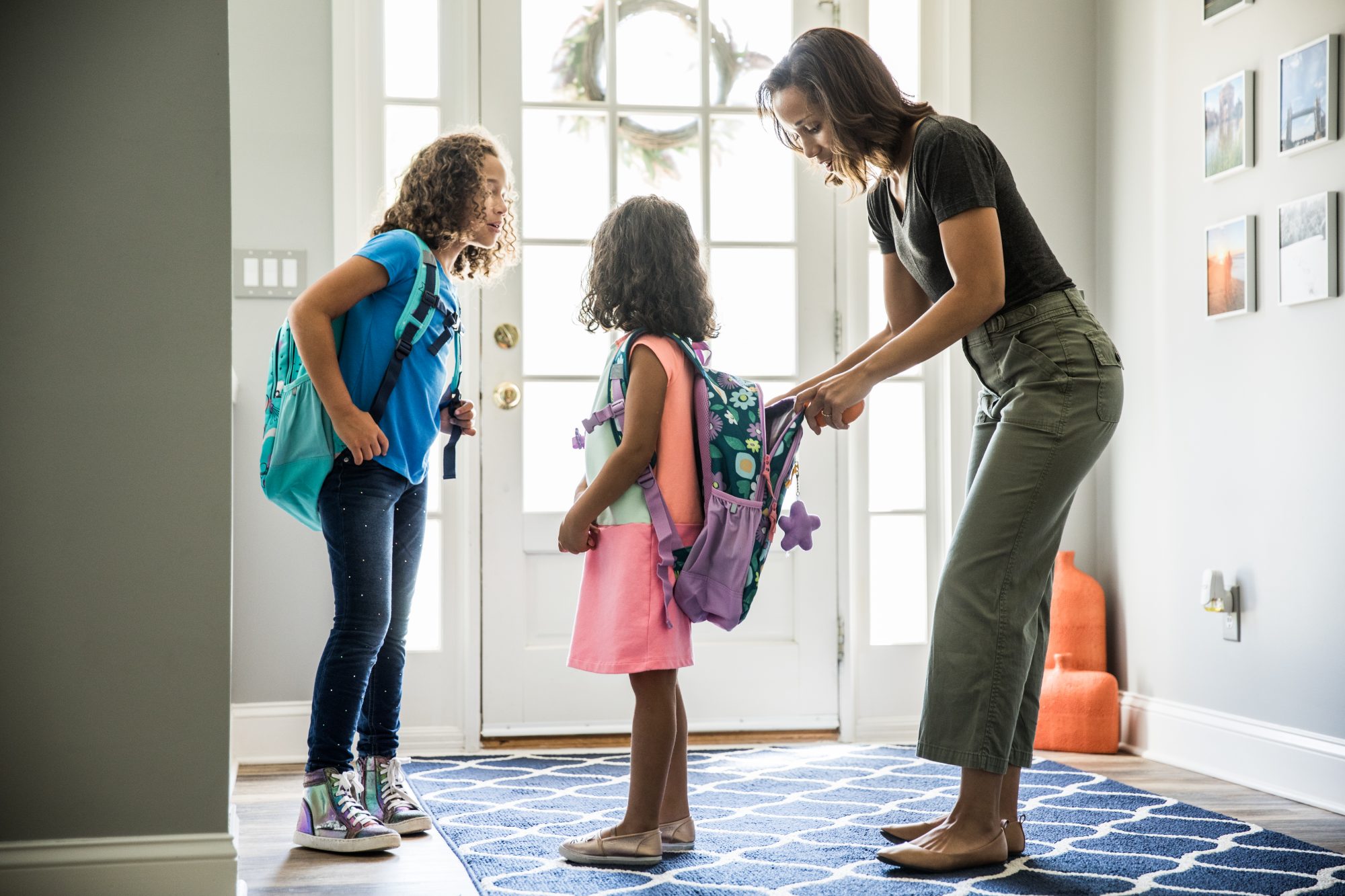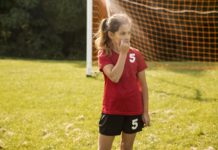
In pre-pandemic times, the coolest back-to-school accessories included folders with fun designs and backpacks. Parents entered the 2021-22 school year knowing things would be different.
But masks weren't the only new-normal accessory on many shopping lists. The New York Times reported some parents were sending their kids to school with air quality monitors to gauge whether the building was safe.
"In some places, but not all, individual schools and districts are not being terribly transparent about what is going on in the school [including updates on ventilation and filtration], and so these are the parents that end up [sending their children to school with air quality monitors]," says Jeffrey Siegel, Ph.D., a professor of civil engineering at the University of Toronto and a member of the university's Building Engineering Research Group.
More awareness on the importance of good ventilation is a positive thing. "Thanks to the arrival of low-cost CO2 monitors, people are able to check ventilation rates themselves," says Joseph Allen, DSc, M.P.H., an associate professor and director of the Healthy Buildings program at the Harvard's T. H. Chan School of Public Health. But both he and Dr. Siegel concede the monitors don't paint the entire picture of school building safety as it relates to air quality and COVID-19.
Experts discuss indoor air quality, what monitors can and cannot do, and how else parents can keep their children safe in school during the pandemic and beyond.
Air Quality and Schools
Throughout the pandemic, we've heard advice from the Centers for Disease Control and Prevention (CDC) and other medical professionals to keep gatherings outside as much as possible. There's a reason for that.
"COVID-19 spreads between people through larger respiratory droplets and smaller aerosols when infected people breathe, speak, cough, sneeze, or exercise," says Jan Carney, M.D., M.P.H., a professor of medicine and associate dean for public health at the Larner College of Medicine at the University of Vermont. "COVID-19 virus particles spread between people more easily indoors where the virus can concentrate, as compared to outdoors where virus particles are more easily diluted."
It makes sense then that there's a spotlight on air quality in schools during the pandemic. But the truth is, it's been an issue for a while, and improving it can have benefits other than reducing viral spread.
The average school building was built in 1968, according to one 2018 report. Dr. Siegel says that districts have to prioritize funding, and building upgrades like filtration and ventilation often fall by the wayside. He estimates his daughter's school's HVAC (heating, ventilation, and air conditioning) system is about 50 years old.
But should it be prioritized? A 2015 study found classroom ventilation affected test scores. And the U.S. Environmental Protection Agency (EPA) highlights numerous studies from the 1990s indicating that improved air quality, including by letting outdoor air indoors, can boost the performance of children and adults.
Dr. Allen hopes the increased attention forces long-needed changes that benefit children and school employees after the pandemic. He sees the purchase of air quality monitors as a positive sign.
A Primer On Air Quality Monitors
Dr. Siegel explains air quality monitors measure the amount of carbon dioxide in a room. We expel carbon dioxide when we breathe, so the more CO2 in a room, the poorer the ventilation. "In a traditional sense, we think of [carbon dioxide] as a marker for ventilation," says Dr. Siegel. But how valuable that is often depends on who you ask, and experts say it's one piece to the puzzle of school building safety.
Are they accurate?
People can find non-dispersive infrared monitors online for about $250-$300. Though it's a reasonable investment to some, can you trust the numbers? "They are accurate enough to gauge generally how well a building is ventilated," Dr. Allen says.
Parents may notice discrepancies—a classmate's monitor may read 795 parts per million (ppm), whereas their child's may say 805 ppm, but Dr. Allen says that difference is inconsequential. It may be that one child was sitting closer to an open window, breathing more heavily, or had it closer to their body.
What’s a good reading?
The CDC says carbon dioxide levels should be below 800 ppm for "good ventilation." But Dr. Siegel and Dr. Allen agree that it's more complicated than that.
"I know people want a simple answer that above 1,000 is a problem; below 1,000 is fine," Dr. Siegel says. "That's fundamentally not possible… to be very clear, how much CO2 a person breathes out varies."
Factors that affect how much CO2 is in a room includes:
Last year, Dr. Allen developed a tool that accounts for many of these factors. Schools officials or parents can enter information and get an estimated CO2 reading. Dr. Allen says that generally, a CO2 reading above 1,500 to 2,000 ppm is a sign that a space is under-ventilated, but that doesn't mean it's completely unsafe.
What monitors don’t tell you
Dr. Allen explains two primary factors work together to improve or reduce the air quality in a room: ventilation and filtration. Filters, like HEPA filters, catch particles, wildfire smoke, air pollution, and respiratory aerosols (like those that spread COVID-19).
"CO2 tells you about one of those two strategies: ventilation," he says. "It doesn't tell you anything about how the filters are working."
In fact, two rooms can have different CO2 levels and be about as safe.
"Let's say you have a classroom that is really well ventilated and has really low CO2 concentrations [but doesn't have good filtration], a parent may say, 'That room is safe.'" Dr. Siegel says. "And then you have a classroom that is really well filtered but not ventilated well. It's going to have higher CO2 levels. Those rooms could have the same risk and have a really different CO2 reading."
What Parents Using Monitors Can Do
If you've decided to invest in an air quality monitor and are concerned about readings, Dr. Siegel and Dr. Allen recommend keeping a few things in mind when approaching school officials.
Readings are relative
Dr. Siegel says it's often best to establish a baseline and monitor for drastic changes. For example, if a sensor usually says 600 but one day says 1,100, he says, "that suggests a change and something you should pay attention to."
Ask: what changed?
If a number changes, Dr. Allen suggests investigating why. For example, perhaps the window was closed for the first time all year because of the cold. Parents can advocate for it to remain open—at least during the pandemic, Dr. Allen says. Once the virus recedes, there are other ways to reduce issues with indoor air, such as through filtration.
Inquire about filtration
"[Make] sure you have enhanced filtration," Dr. Allen says. "If you have high CO2 and poor-grade filters, these are the conditions where we see spread."
What does enhanced filtration look like? Looking at Minimum Efficiency Reporting Values (MERV) ratings can help. MERV ratings tell you how well a filter captures particles. Dr. Allen is calling for MERV-13 filters in HVAC systems that recirculate air.
In layperson's terms, Dr. Allen is referring to supply air that is recirculated through the HVAC system and returned to the indoor space. Unless a system is 100 percent outdoor air, an area will contain outdoor and recirculated air. The EPA says MERV-13 or higher ratings can trap smaller particles, like viruses. The American Society of Heating, Refrigerating and Air-Conditioning Engineers recommends installing MERV-13 filters on central air filtration while operating during COVID-19.
If an HVAC system cannot provide sufficient clean air to a space, Dr. Allen and the CDC advise using portable air cleaners with HEPA filters. HEPA filters can remove at least 99.97 percent of dust, pollen, mold, bacteria, and any airborne particles, the EPA says. Portable air filters, or air purifiers, are particularly beneficial when outdoor air cannot be circulated.
Stay calm
Emotions are running high as the pandemic continues, and many parents concerned about air quality simply want to keep their children safe. But Dr. Siegel recommends approaching the discussion calmly.
"I encourage people to not go into attack mode based on a high CO2 level," Dr. Siegel says. "Any parent should approach this as a conversation. [Try], 'Hey, we had these high CO2 levels. This is how we do it. Can we have longer-term, transparent monitoring?'"
How Else Parents Can Keep Their Kids Safe in School
Air quality is an important piece to reducing the spread of COVID-19, but public health officials advocate for a layered approach, especially since you can still get COVID-19 even in indoor places with low CO2 levels.
Wear a mask
A recent CDC study showed more COVID-19 spread in schools without masks policies. K-95 and N-95 provide the most protection. But the best mask is simply the one your child will wear, according to Sharon Nachman, M.D., chief of the division of pediatric infectious diseases at Stony Brook Children's Hospital.
"K and N-95 are more difficult to wear and often more expensive for families," Dr. Nachman says. "With most adults back at work and in-person events, and wearing either paper or cloth masks, we are not seeing super spreader events, which strongly suggests that they are sufficient for everyday use."
Get vaccinated
The CDC recommends everyone eligible for the vaccine receive their shots. Children ages 12 and above are eligible for the vaccine. Those ages 5 to 11 will likely be eligible soon. "I recommend that parents of younger children check the CDC and FDA websites for updates," Dr. Carney says.
Dr. Nachman also encourages parents to ensure children are also up-to-date with all other vaccinations.
Testing and symptom monitoring
Dr. Nachman suggests keeping children home if they are feeling ill or running a fever. "Fever and new-onset upper respiratory symptoms should lead to COVID testing," she adds.
Also, test after any known exposure to COVID-19, and follow CDC quarantining guides.
The Bottom Line
Air quality monitors may be able to measure C02 in a classroom and get an idea about the ventilation. But it isn't always that easy. Experts say parents can stick to other safety measures instead, including wearing a mask, getting kids who are eligible vaccinated, and paying attention to COVID-19 symptoms and getting them tested whenever necessary.





